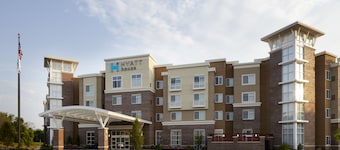The site of an important American Revolutionary War encampment, this scenic park is now home to pleasant trails and interesting monuments.
Valley Forge National Historical Park is a beautifully powerful historic site. More than 2,000 soldiers died here during the winter of 1777. Today, learn about life at this former encampment through informative exhibits and monuments. With 3,500 acres (1,400 hectares) of greenery, the park is also popular for jogging, cycling and picnicking.
With the British army occupying Philadelphia in 1777, Continental Commander George Washington chose Valley Forge as a strategic place for his 12,000 troops to encamp over the winter. Throughout the harsh winter, the soldiers endured freezing temperatures, hunger, damp quarters and disease. Although many perished, the army emerged in 1778 to win a number of important battles. Subsequently the site has come to represent resilience and survival.
Begin your exploration at the Visitor Centre, to pick up a map of the park. Check out the Determined to Persevere exhibits, which use Revolutionary War artefacts to create a picture of life during the encampment. Discover more about the encampment by watching the orientation film at the theatre next to the centre. Lectures and other special events are often held at the park, so be sure to ask if anything is taking place during your visit.
You can also see carefully reproduced replicas of the soldiers’ huts based on the original models. Continue to investigate the park’s military history at Artillery Park, where soldiers stored cannons. Look for the bronze equestrian statue of General Anthony Wayne.
Save time to explore the park’s 19 miles (31 kilometres) of hiking trails. Go biking along the 21-mile (34-kilometre) cycling path that runs along Schuylkill River, connecting Valley Forge to Philadelphia. See if you can spot some of the 227 species of birds that live in the area, such as swallows, thrushes and European starlings.
Valley Forge National Historical Park is open daily and admission is free. Take a guided tour in an open-air trolley bus or use the free Revolutionary Shuttle, which runs between the park’s main sightseeing points.















